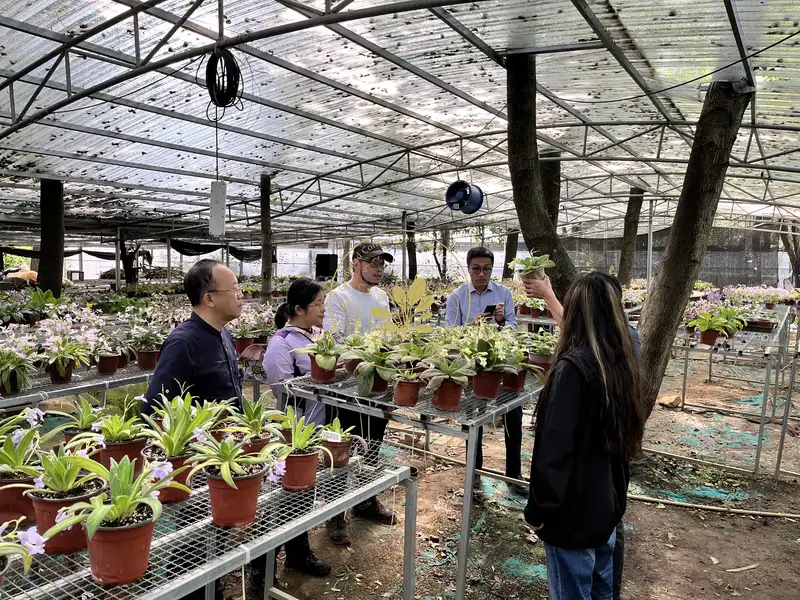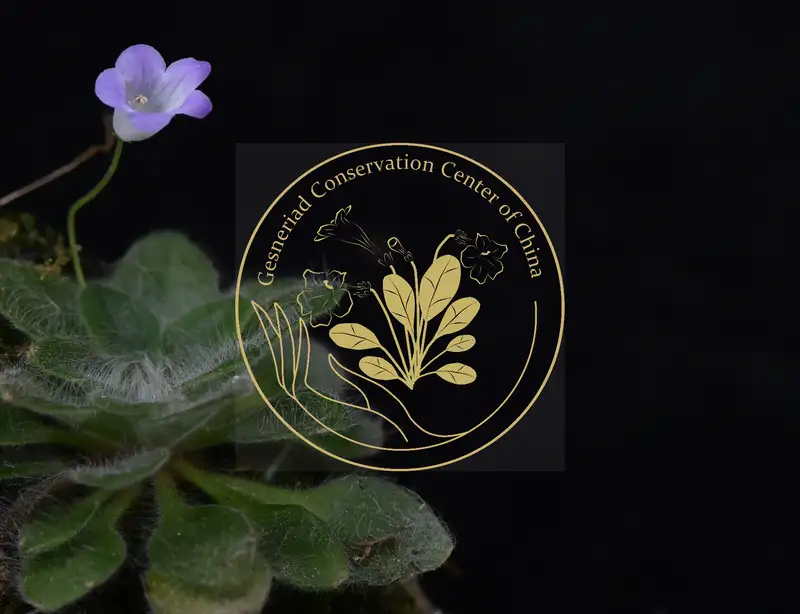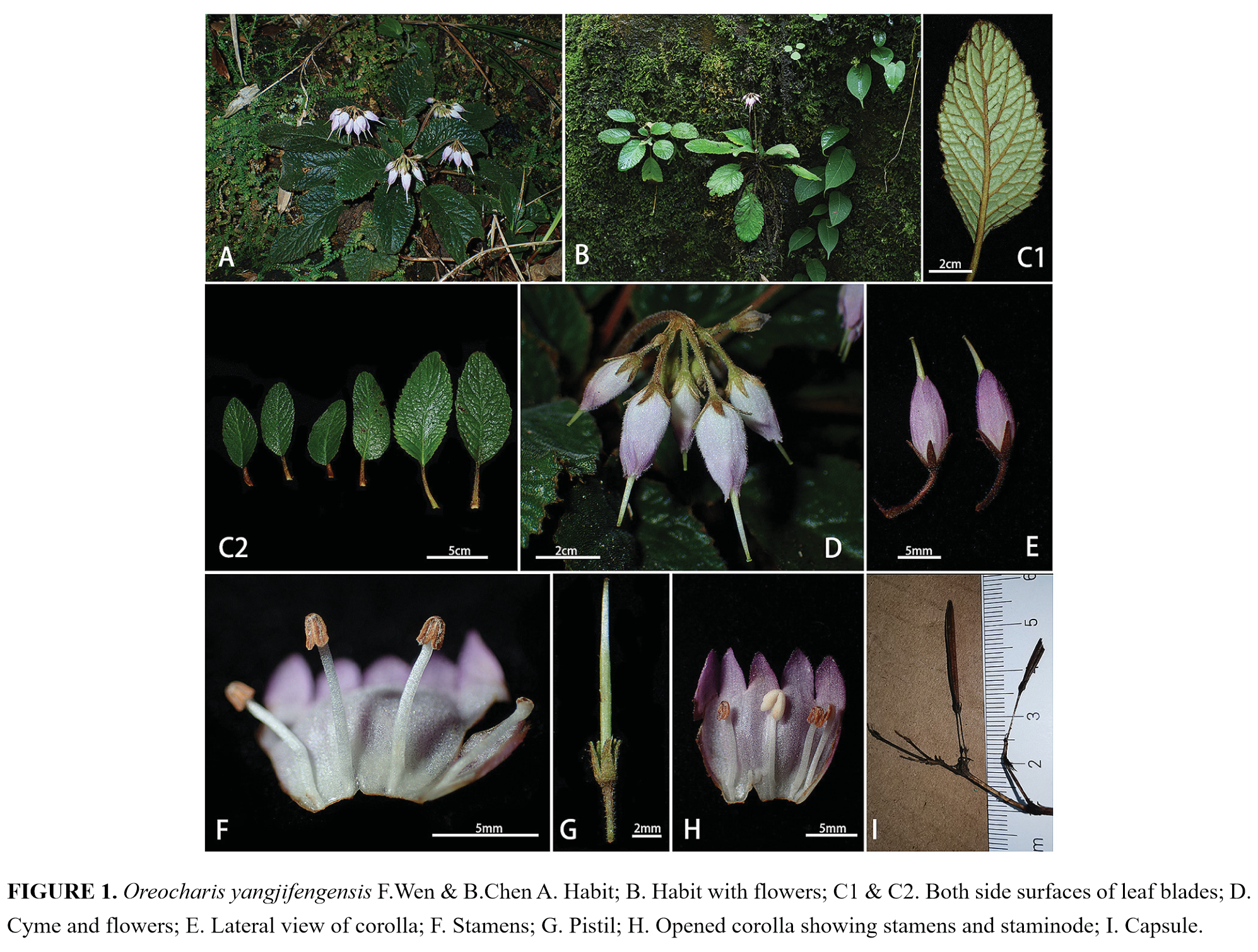No.13 XIU-ZHEN CAI, JING TIAN, SHUN-YONG XIAO, LING PENG & KE-MING LIU
Primulina hunanensis sp. nov. (Gesneriaceae) from a limestonearea in southern
Nordic Journal of Botany 33:576–581.
ABSTRACT
A new species of Gesneriaceae, Primulina hunanensis,
is described and illustrated from southern

Figure 1. Primulina hunanensis sp. nov. (A) habit, (B) leaf, (C) opened corolla exposing stamens and staminodes, (D) stamens, (E) calyx, (F) pistil, (G) capsule. Drawn by Jing Tian from the holotype (Cited from Cai et al., 2015).
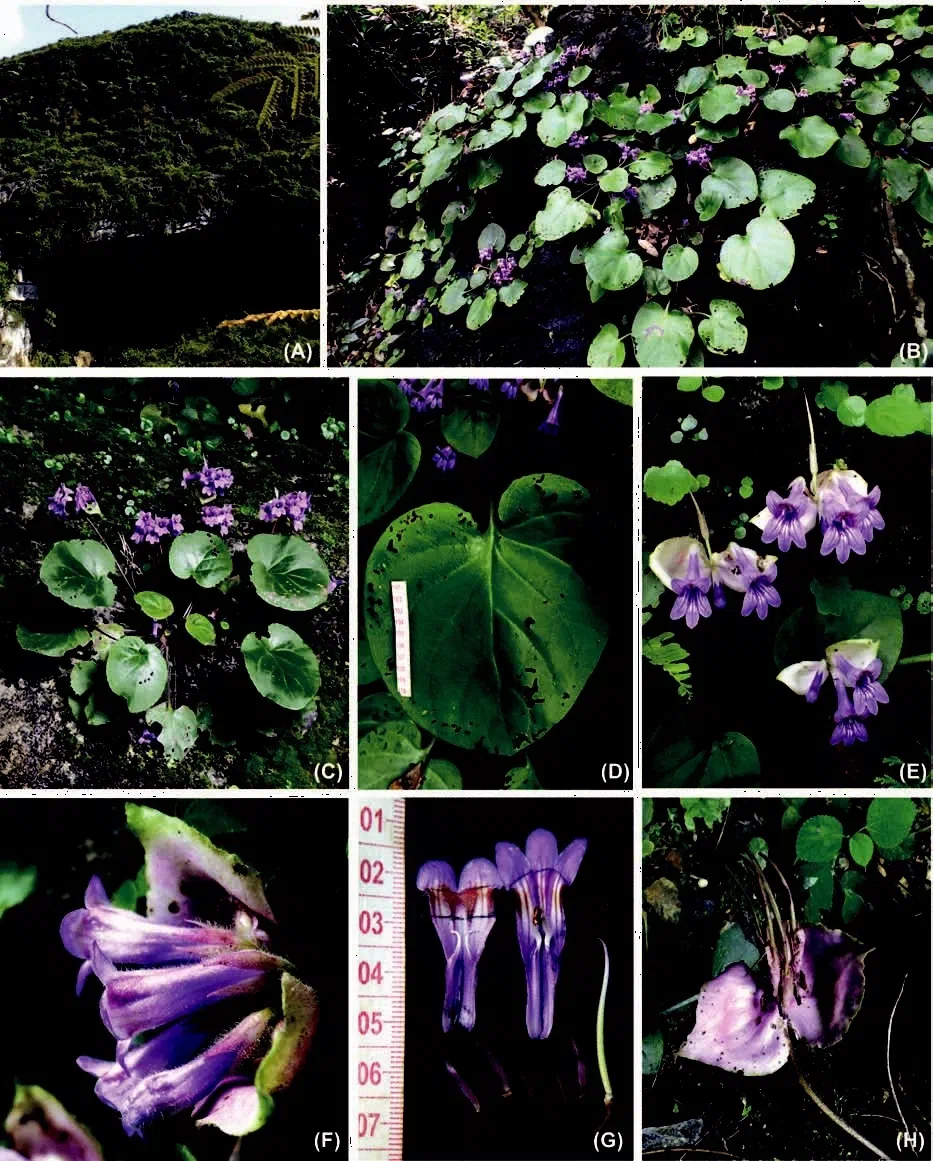
Figure
2. Habitat and morphology of Primulina hunanensis sp. nov. (A) habitat,
(B) habit, (C) whole plant, (D) adaxial leaf blade surface, (E) flower, front
view, (F) flower, side view, (G) anatomical structure of flower, (H) young
fruits. Photo by Xiu-Zhen Cai from
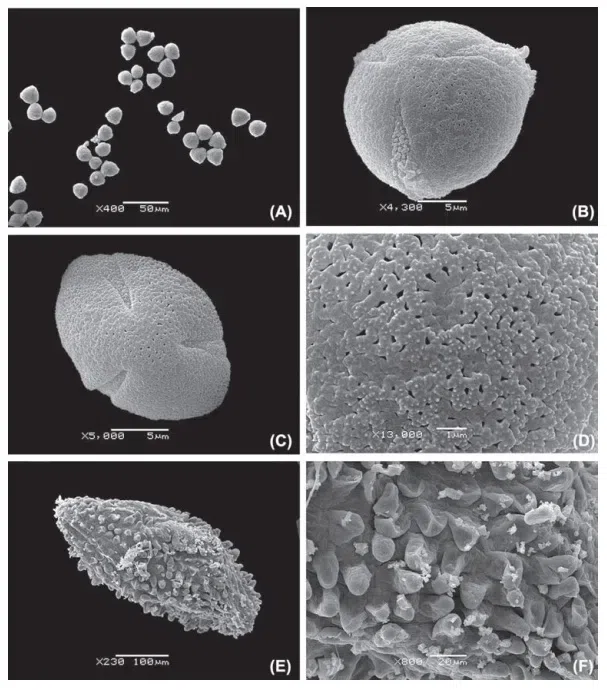
Figure 3. Scanning electron microscope (SEM) photos of pollen and seed of Primulina hunanensis sp. nov. (A)–(D) pollen, (A) whole view (showing the shape of pollen grains), (B) equatorial view, (C) polar view (showing 3-colpate), (D) polar view showing exine ornamentation, (E)–(F) seed and testa, (E) overview, (F) testa surface. Voucher specimen: Ke-Ming Liu and Xiu-Zhen Cai 31270(Cited from Cai et al., 2015) .



